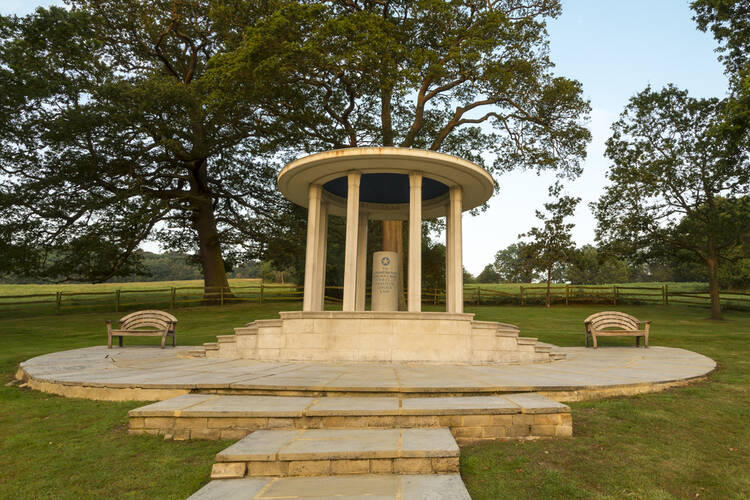This week marks 800 years since King John signed the Magna Carta, the Great Charter, at Runnymede on the banks of the Thames, near Windsor to the west of London. A document of 3,500 words on calfskin parchment, it first it was known as “the Charter of Runnymede,” becoming known as Magna Carta two years later, when it was reissued by John’s son, Henry III. The popular assumption has it that bad King John was brought to book and forced to create and sign the charter by the nobles of his realm. Now, more recent research offers the theory that biblical theology and the bishops, in particular Stephen Langton, the Archbishop of Canterbury at the time Magna Carta was written, played a centrally significant role in its writing and its implementation throughout the land.
Most history taught in schools here credits a number of barons for Magna Carta, as well as teaching that the King’s scribes composed the actual document. Recent new evidence has given rise to an alternative view, that the Church was responsible for its publication and preservation. Following a three-year study, historians now attribute its survival to church scribes based at the ecclesiastical centres in Lincoln and Salisbury. The church was the agent both of its creation and its promulgation.
Stephen Langton (ca.1150 – 1228) was an important player. Applying the fundamentals of kingship and power that he encountered in his close study of the Bible, he is now thought to have drafted the text at Lincoln Cathedral, near his own birthplace. The work was entrusted to the cathedrals and was incorporated, in the 13th century, into the manual for parish priests in the catholic church in England. Four copies of the charter are known to be still in existence, one each in the great Norman cathedrals at Lincoln and Salisbury, major ecclesiastical centres of those times, and two in the British Library.
In the charter, the realm was seen as communal which meant that rights and liberties pertained entirely to the community, not the monarch who is in turn meant to be the guarantor of those liberties, not their opponent. Kingship and power, God-given, are there to protect the weak from the depredations of the powerful. A just monarch should not be above the law but subject to the law. The charter established, although cannot be read as expressly endorsing, the basic right to fair trial by jury, the notion of habeas corpus and that the punishment must fit the crime. Individual freedom was to be cherished and protected; the document also avowed the freedom of the English church. In those days, the church was seen as the guarantor of the rule of law, thus copies of the charter would have been sent and entrusted to all the bishops of the land. The Charter was not, however, a grand statement of principled rights as it had more pragmatic time-bound purposes. It was probably more concerned with relations between the crown and the barons, rather than with the ordinary people. The clauses that have such resonance 800 years later are buried in a text relevant only to its own times.
Bishop Langton emerges as a mediator. As a devout Christian and scholar, he would not have been a willing opponent of the King, preferring to focus on a reform of kingship according to those ideals he detected in Scripture. King John had no intention of permitting the Charter’s publication, which is where the legend arises that he signed at the point of a baron’s sword. The backdrop to all of this is an intense struggle between John and the Pope, Innocent III, who had appointed Langton over the king’s strong objections. Langton had been a cloistered university professor, who had studied in Paris, where he became friends with the future Innocent III. John had refused to accept his appointment, calling him a traitor while barons thought he was on the king’s side. He must have felt mistrusted by all sides.
The legacy of Magna Carta has shaped English, and then British history and that of many other nations. This is an anniversary that reminds us of so much that is central to our civilisation and the human rights that are, if not explicitly enshrined in its text, at least are inspired by its coming into being, and are once again opposed in many countries. President Obama has spoken of Magna Carta as the inspiration for the Founding Fathers. The Runnymede location may still be visited. There is a stone memorial at the site which was installed by the American Bar Association in 1957. The monument honours a document that probably travelled across the Atlantic with the pilgrim fathers, who sought a new life founded on the principles expounded in Magna Carta, influencing and perhaps even becoming the inspiration for the constitution of the United States. Now we find that it may well have come from the pen and the mind of a quiet and conciliatory scholar, steeped in the study of Biblical literature.








